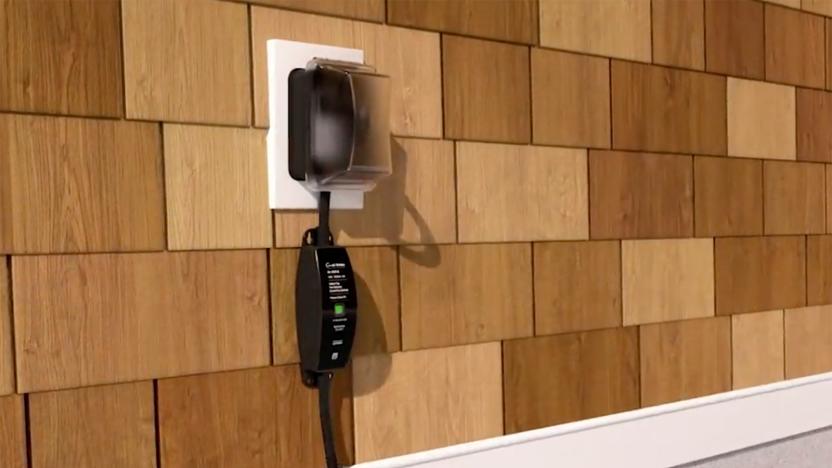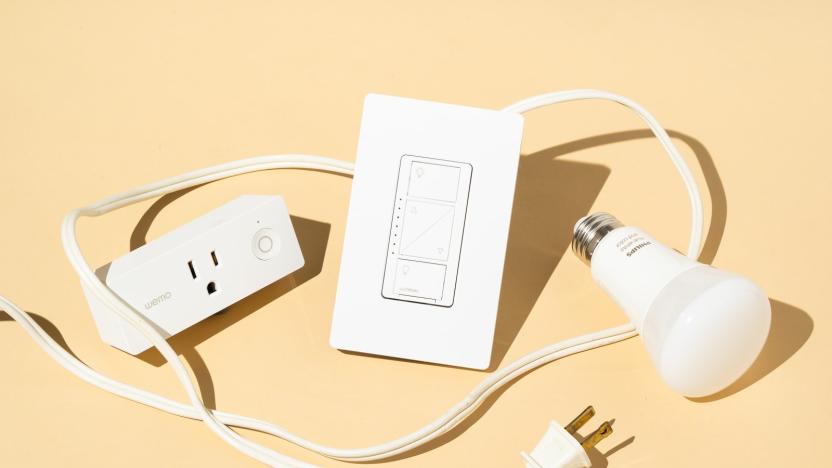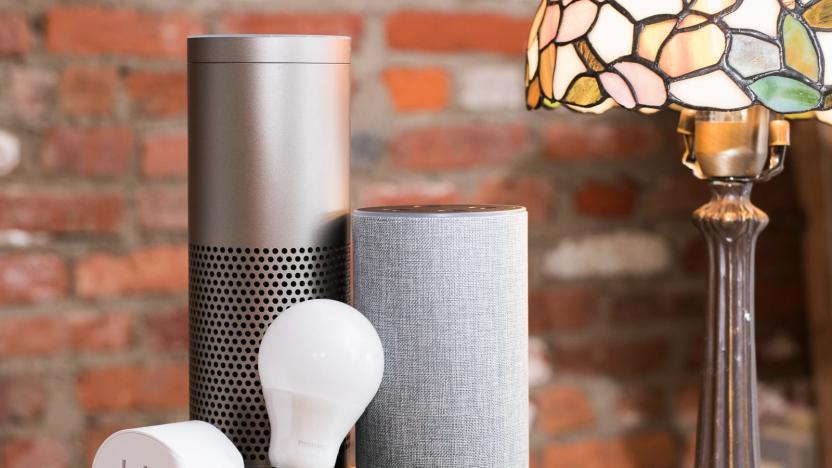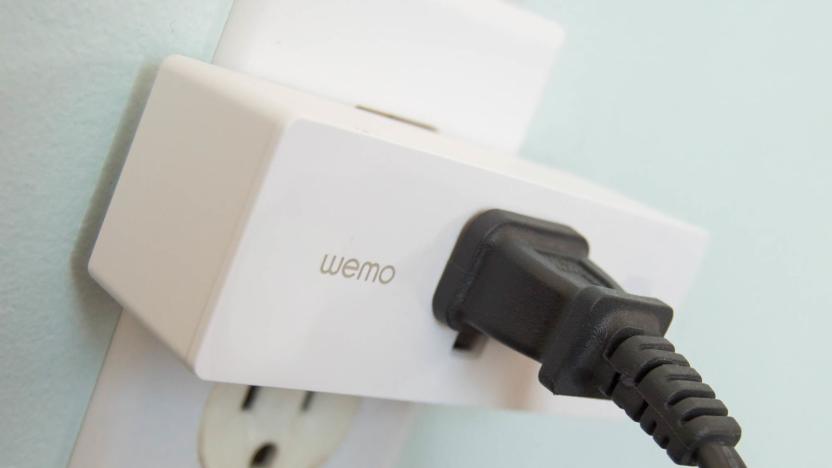lutron
Latest

Lutron's outdoor smart plug controls your lights in harsh weather
Lutron has unveiled a Caseta Outdoor Smart Plug that's built to survive tough weather — it can control your patio lights even in torrential downpours.

Ring devices will soon work with Lutron's smart lighting systems
You can set your lights to turn on for a while when Ring devices detect movement.

When to use a smart bulb, switch or plug
By Rachel Cericola This post was done in partnership with Wirecutter. When readers choose to buy Wirecutter's independently chosen editorial picks, Wirecutter and Engadget may earn affiliate commission. Read the full blog seeing the light: when to use a smart bulb, switch, or plug. I'm not sure if it's because I've captured a lot of critters on home security cameras or seen one too many horror movies, but entering a dark house terrifies me. Although my husband would be perfectly happy to solve this problem by leaving the lights on all day and night, it's completely unnecessary: Smart lighting exists for precisely this purpose. Setting up your home with smart lights can solve a lot of problems. However, because there are several types of devices you can pick from—bulbs, light switches, and add-on plugs—it can be hard to know where to start. Why and when do you pick one of those devices over another? All smart lighting devices allow you to control them from your smartphone, and you can set them up to work like old-fashioned lighting timers, but they can do much more. You can control whole groups of lights at once, set them to go on and off based on local sunset times, and configure them to respond to other smart devices, such as motion sensors or security cameras. But each type of device has a superpower (and also a weakness, just like Superman). Let's look at what devices work best for three different scenarios.

The best Alexa-compatible smart-home devices for Amazon Echo
By Rachel Cericola This post was done in partnership with Wirecutter. When readers choose to buy Wirecutter's independently chosen editorial picks, Wirecutter and Engadget may earn affiliate commission. Read the full guide to Alexa-compatible smart-home devices for Amazon Echo. Imagine walking into your home at night, arms overflowing with groceries. Even if you've installed smart lights, you'd need to put the bags down, pull out your phone, unlock it, open the app, find the control for the lights you want, and then tap the icon—might as well just stick with a plain old wired switch. But with an Alexa, you simply say, "Alexa, turn on the kitchen lights." And it's not just lights; Alexa is capable of controlling everything from basic smart plugs to garage doors. All three smart-speaker platforms (Alexa, Google Assistant, and to a lesser degree, Siri) can control a variety of smart-home devices and add an extra level of convenience to your smart-home system. We think Amazon's Alexa has a slight edge over the others because it works with more devices, and the wider family of Amazon Echo products makes it easier to fit them everyplace in your home. However, if you already have a Google Home speaker, the differences aren't large enough for you to need to switch platforms. We have guides for the best devices to use with Google Assistant and Siri/HomeKit. The Amazon Echo (or Echo Dot) offers a convenient interface for your smart home and provides functionality that an app on your phone can't. If you already have some Alexa-compatible devices or one of the three major smart-home hubs (SmartThings, Wink, or Insteon), adding an Echo can make accessing those devices more interesting and convenient. Taking advantage of its near-instantaneous response time and reliable voice-recognition processing is significantly faster than pulling out your phone and opening an app just to turn the lights on or off. Some products, such as Philips Hue lights and Nest thermostats, have native Alexa support, while others require you to enable a third-party skill. We tested plenty of both varieties to come up with the best-performing and most reliable recommendations, which we're continually testing to ensure that each new firmware and app update meets our high standards. Over the past several years, Wirecutter's editors and writers have tested just about every smart-home device of consequence. As more people end up buying smart speakers and platform support gets more and more important, we wanted to provide one place where you could access all of our picks that are compatible with the devices you already own, across all of our smart-home recommendations. Because these devices receive regular updates with additional compatibility and new features, we are continually testing and reevaluating our picks in our own homes to confirm that they still meet our recommendation standards. We'll update this guide as we learn new information, but be sure to read the full reviews if you'd like more details and test notes. If you don't yet have an Alexa-enabled device, or you want to learn more about what Alexa is and what you can do with these things, check out our full guide to Alexa and Amazon's Echo line of smart speakers.

The best plug-in smart outlet
By Rachel Cericola This post was done in partnership with Wirecutter. When readers choose to buy Wirecutter's independently chosen editorial picks, Wirecutter and Engadget may earn affiliate commission. Read the full plug-in smart outlet guide here. After spending more than two years testing 41 smart outlets, we're confident that the Wemo Mini is the best smart outlet plug-in adapter for people who want to add remote control and automation to their existing lamps, fans, or other electrical devices. It's the most reliable Wi-Fi smart plug we tested, it's simple to use, and it works with Amazon Alexa, Apple HomeKit, and Google Assistant. The Wemo Mini is the only model that has been rock-solid reliable over long-term use, offers a compact design that won't block both outlets on a wall plate, and supports all the major voice-control platforms. Like most of the smart plug-in switches we tested, the Wemo Mini is easy to set up: Just plug it into an outlet, download an app to your phone, set up the wireless connection, and then control lamps, small appliances, and even higher-draw devices like fans and air conditioners. The Wemo family also includes light switches and dimmers, so it's easy to expand your system. The Lutron Caséta Smart Lighting Lamp Dimmer costs quite a bit more than the Wemo Mini, but it has two outlets, allowing you to control two lamps or strings of lights at once (though not independently). And it lets you dim those lamps rather than just turning them on and off—a rarity among smart plugs. The Caséta system connects over a robust wireless mesh network, rather than Wi-Fi, so Wi-Fi dead spots in your house aren't a problem, but it requires Lutron's proprietary Caséta Smart Bridge hub. We recommend you buy a kit that includes the hub. This outlet supports only lamps, not fans or other motors, but the Caséta line includes compatible in-wall dimmers, window shades, and remotes, so this model is ideal for people who want a larger smart-home system. It works with Amazon Alexa, Apple HomeKit, Google Assistant, Nest, Samsung SmartThings, Wink, and more. If you want to be able to control outdoor devices—during the holidays or all year long—the iClever IC-BS06 smart plug can weather the outdoors better than you can, operating in temperatures ranging from –4 to 140 degrees Fahrenheit. It has two plugs that you can control remotely and independently using the app or voice control (via Amazon Alexa and Google Assistant, but not Siri), and you can configure automations based on time, weather, humidity, temperature, air quality, sunrise and sunset, or triggers from other iClever devices.

Lutron adds Alexa support to its connected home devices
While Amazon's Alexa-enabled devices get more and more features to play music and order goods from the online retailer, it's IoT that's making it the must-have device for the home. With it, instead of reaching for a smartphone and launching an app, you can simply say, "Alexa" and control an increasing amount of connected devices. Now Lutron's Caseta Wireless lighting system is ready to be told what to do.

Comcast's home automation app links with Nest, Lutron and more
Earlier this year Comcast said its Xfinity Home service would start connecting to more automation gadgets you probably already own, and now it does. Right now, its app (iOS, Android) connects to Nest thermostats, August Smart Locks, Chamberlain MyQ garage controllers, and Lutron's Caseta light controls. The plan is to eventually make all of these services controllable via the new X1 set-top boxes and voice remote controls (now available in Spanish), but that's not ready yet. Comcast is also bringing an SDK that should make it easier for other home automation platforms to build links to their own setups -- with Comcast's approval, of course. Is a cable set-top box really the right place to put the brains of your smart home? With the TV business rapidly becoming just another part of the internet, Comcast sure hopes so.

Engadget giveaway: win a smart home starter kit courtesy of Wink!
The changeover to smart homes seems inevitable, but you do have to make a reasonable investment in networked gear or you'll be stuck building a smart(ish) home one lonely, Bluetooth item at a time. This week, though, one lucky Engadget reader is going to get a boost into the future with a selection of Wink and other compatible smart home items. There's a Wink Relay so you don't always have to dig out your phone to control settings and a Wink Hub to unify the system -- compatible with WiFi, Z-wave, ZigBee and Bluetooth frequencies. That will cover the lamp dimmer, LED lightbulbs, connected lock and sensor pack in this prize bundle as well. If you get hooked, it's easy to expand your smart home's abilities by adding more items to the network as you go. All you need to do is head to the Rafflecopter widget below for up to three chances at winning this IoT starter pack courtesy of Wink. Winner: congratulations to Luis B. of North Miami Beach, FL!

The first products that support Apple's HomeKit have arrived
A year after Apple first announced it, you can finally buy products based on HomeKit. Lutron and Insteon have products available now, while others like Elgato, Ecobee and iHome are bringing accessories soon. That means you'll be be able to build a HomeKit system with programmable lights, plugs, energy and climate sensors, thermostats and more. Apple introduced HomeKit standard to allow such devices to play nicely together, and of course, let you control everything via your iPhone, iPad or Watch. The idea was to also bring voice control to home automation via Siri.

Comcast's Xfinity Home works with automation tech you already own
Comcast's Xfinity Home has been automating living spaces for a while, but now the company is opening up the cloud-based system to more gadgets. Starting this summer, customers can add devices from August, Automatic, Cuff, Leeo, Lutron, Rachio, SkyBell and Whistle to the kit that already wrangles motion sensors, connected outlets, cameras and more. We're talking about things like August's smart locks, Automatic's car tracker and Cuff's smart jewelery. What's more, Comcast is teaming up with Nest as part of the Works with Nest effort to bring that smart thermostat into the fold, too. In addition to those new partners, Comcast will open up an SDK later this year alongside a Works with Xfinity Home certification program to make sure approved devices can be used with minimal headaches.

Cortexa's ZE Home Controller: recreate Demon Seed for a fraction of the cost
Your home is the next frontier for gadgeteers across the world and Cortexa's leading the way by releasing a new kit that'll turn your house into Proteus IV in a matter of minutes. The EZ Home Automation Ready Controller can manage lighting, security cameras and thermostats from the comfort of its Flash-based (aww) web-interface or iOS app. It's also retailing an EZ-Wave Starter package with ten dimmers, thermostat, energy monitor, controller and two lamp modules for quick fitting. You'll also be able to save on energy bills, cutting your power down when you're out and about or by setting custom actions for those lightbulb-left-on-moments. Cortexa's building a HTML5 interface as well as support for Hal and Lutron-based systems, which are due to arrive in "a few weeks." The starter kit will set you back $1,800, while remote access costs $50 a year (or $5 a month). After the break we've got PR for everyone who wants to really freak out the kid you paid to come house-sit when you're on vacation.[Thanks, Jesse]

Solar-powered 'guiltless green' home theater system makes your Wall-E Blu-ray very happy
When Home Theater Specialists of America (HTSA) executive director Richard Glikes wanted a home theater system, he didn't just max it out with the best high definition equipment. He also thought to run it entirely from solar energy from four roof-mounted panels that produce an aggregate of 700 watts per hour in sunlight. It'll reportedly run things for 19 hours straight without having to dip into your traditional power grid. Hardware-wise, we're talking about a 100-inch screen, Sharp projector, six SpeakerCraft in-wall speakers, Integra AV receiver, Lutron lighting, and a universal remote. See how it was made, with the help of time-lapse photography and 1980s infomercial-genre background music, in the video after the break.

Marantz's RC9001 touchscreen remote with WiFi extender
We saw a variation of this Philips TSU9600 at CES. Still, it's nice to see Marantz get official with their own VGA touchscreen remote: the RC9001. Like Philips' model, we expect this Marantz model to integrate with Escient Fireball media servers and Lutron RadioRa lighting controls for full multi-room control. It brings along an option for an RX9001 WiFi extender or RX8001 serial extender too -- right, just like Philips. The only difference appears to be the choice of UI which of course, can make all the difference in the world. Expect the Marantz RC9001 to ship sometime mid-September for right around $1,000. [Thanks, Alban A.]Read -- Philips TSU9600 and RFX9400 wireless extender Read -- Marantz RC9001







